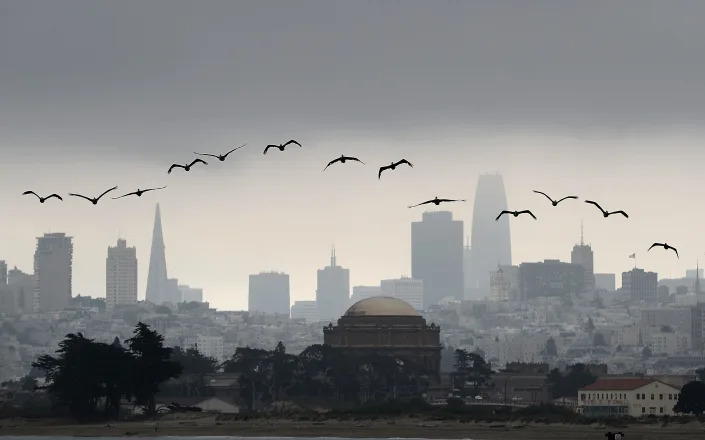Common process by which people get pregnant is in legal jeopardy. Some Democrats want to legally protect IVF
Democratic senators are trying to legally protect the right to use in vitro fertilization after the fall of Roe v. Wade not only ended the constitutional right to abortion but also threw into question the fate of IVF.
Sens. Tammy Duckworth and Patty Murray, along with Rep. Susan Wild, are introducing the new legislation, called the Right to Build Families Act of 2022.
Murray told USA TODAY she hopes the legislation "absolutely makes it clear in this country that IVF is protected so everyone is able to have their family."
IVF has become a commonly-used process by which people get pregnant, and about 2% of all babies born in the U.S. are conceived through IVF or another form of assisted reproductive therapy.
PREVIOUSLY: Medication abortion may be the next focal point in the fight over abortion access. Here's what to know.
FACT CHECK: Planned Parenthood parody account shared tweet promoting 'white privilege' donations
What to know about IVF
It's commonly used: According to the Centers for Disease Control and Prevention, IVF is responsible for about 84,000 babies annually, including those born to military families who wanted to delay pregnancy during deployments or people undergoing cancer treatments.
It's in legal jeopardy: Some state-level abortion bans or proposals contain no exceptions for IVF, including the process by which eggs are harvested and then fertilized in a laboratory.
Experts worried: Some IVF experts say strict bans on abortion could curtail the use of IVF through a variety of avenues, from the potential removal of a failed implanted embryo to the fate of unused embryos left over from the process.
Many embryos in storage: The Department of Health and Human Services estimated in 2020 that there were at least 600,000 frozen embryos in storage nationally.
What is the Right to Build Families Act of 2022?
The Right to Build Families Act of 2022 bans any limits on seeking or receiving assisted reproductive therapy, according to a summary of the bill shared with USA TODAY by Duckworth and Murray's offices.
Assisted reproductive technology, also called ART, includes fertility treatments such as IVF.
The bill also protects health care providers who offer assisted reproductive technology and related counseling and allows the Department of Justice to pursue civil action against states that violate the bill by limiting access to it.
Supporters of Right to Build Families Act say it's necessary
Duckworth said abortion rights groups had been warning for years that anti-abortion activists would not stop at banning abortion and would also seek to limit access to contraception and restrict the use of assisted reproductive technology.
She said comments from leading anti-abortion groups in Texas demonstrate that agenda in the wake of the Supreme Court's Dobbs decision overturning Roe v. Wade.
"There is this outright push to basically get rid of IVF, just as there is a push to get rid of contraception," said Duckworth, a Democrat from Illinois. "People thought that the Dobbs decision was about abortion. It's about your privacy rights to bodily autonomy."
Duckworth open about personal journey with IVF
Duckworth conceived two daughters via IVF and made history in 2018 when she became the first sitting U.S. senator to cast a vote while accompanied by a child, then-10-day-old Maile Pearl. Two years later, Duckworth opposed the Supreme Court nomination of Judge Amy Coney Barrett on the grounds that the judge had previously supported the work of an anti-abortion group that considered some aspects of IVF to be manslaughter.
Murray said many people may not be aware of the threats against IVF post-Roe. But in a hearing after the Supreme Court decision to overturn Roe v. Wade, Murray said IVF providers "have serious concerns about whether parents and providers could be punished if an embryo doesn’t survive being thawed for implantation, or for disposing unused embryos."
MIDTERMS: Abortion rights were on midterm ballots in several states. Here's what voters decided.
WATCH: President Biden marks 100 days since Dobbs decision, calls out 'extremist' abortion laws
"This is such an important issue for so many families in our country who today, because of the medical care we can provide, have the ability to have a family when they may not have many years ago," she told USA TODAY on Tuesday. "That is now under threat because of the overturning of Roe v. Wade and decisions in state courts across the country that may now impact their ability to have a child."
Why does IVF access matter?
Without a federal mandate to protect IVF, states could be free to ban it using some of the same justifications as abortion.
Rebecca Parma, the senior legislative associate with the anti-abortion group Texas Right to Life, said anti-abortion advocates will eventually push for embryos to be considered human, regardless if they are inside a uterus or in cryo-storage.
“Ultimately, we believe that all human life is valuable and deserves our legal protection from that beginning moment of fertilization, whether that occurs through normal means or through IVF," Parma told Spectrum News 1 this summer. "And so certainly we want those embryos who are created through the IVF process protected."
Duckworth said many of her Republican colleagues have previously supported mandating the Department of Veterans Affairs to pay for IVF and other assisted reproductive technology.
"It is one thing to say that you're anti-choice, and you're against abortion," she said. "But it's another thing to be on the record being against the right of people to start families."
Want to know more?
WITHOUT ROE, WHAT HAPPENS TO IVF?: People struggling to conceive worry embryos are at risk
'IT WAS REALLY HARD': Jennifer Aniston reveals journey with IVF, trying to get pregnant
This article originally appeared on USA TODAY: Senate Democrats move to protect IVF with Right to Build Families Act










